
Ultimate Kitchen Shower Hose Checklist: Ensure You Choose the Perfect Fit for Your Home
When it comes to optimizing your kitchen space, the importance of selecting the right Kitchen Shower Hose cannot be overstated. Recent industry reports indicate that an estimated 70% of homeowners underestimate the impact of hose quality and compatibility on overall kitchen functionality. A well-chosen Kitchen Shower Hose not only enhances convenience during meal prep and clean-up but also contributes to efficient water usage, a growing concern as studies show that nearly 30% of residential water consumption occurs in kitchens. Moreover, with various options available in terms of length, material, and flexibility, making an informed choice is crucial for ensuring both performance and longevity. In this blog, we provide the ultimate checklist to help you navigate the myriad of choices and ensure you choose the perfect-fit Kitchen Shower Hose for your home.

Benefits of Choosing the Right Shower Hose Material for Kitchen Use
When it comes to equipping your kitchen, many homeowners overlook the importance of selecting the right shower hose material. Choosing the correct material is crucial, as it affects not only the durability and functionality of your kitchen setup but also the overall aesthetic appeal. Stainless steel and high-quality plastic are two popular options, each offering unique benefits. Stainless steel hoses are known for their longevity and resistance to corrosion, ensuring that they maintain their appearance and performance over time. They provide a sleek and modern look that complements contemporary kitchen designs.
On the other hand, high-grade plastic hoses are lightweight and often easier to handle, making them a great choice for those seeking flexibility in their kitchen tasks. They are typically less expensive and can be found in various colors and styles to match your decor. Additionally, the right plastic materials can offer resistance to fading and tearing, ensuring that the hose remains functional and visually appealing. Ultimately, understanding the advantages of different shower hose materials can greatly enhance your kitchen experience, leading to a more efficient and stylish environment.
Ultimate Kitchen Shower Hose Checklist: Ensure You Choose the Perfect Fit for Your Home
| Feature | Material | Length (ft) | Flexibility | Ease of Installation | Cost ($) |
|---|---|---|---|---|---|
| Durability | Stainless Steel | 5 | High | Easy | 25 |
| Weight | PVC | 7 | Moderate | Moderate | 15 |
| Corrosion Resistance | Brass | 6 | High | Easy | 20 |
| Pressure Resistance | Rubber | 4 | Very High | Difficult | 18 |
| Maintenance | Polyurethane | 8 | Medium | Easy | 22 |
Understanding the Importance of Hose Length for Optimal Usability
When selecting a kitchen shower hose, the length is a critical factor that significantly influences usability and overall satisfaction. According to a study conducted by the National Kitchen and Bath Association (NKBA), 72% of homeowners reported that they preferred a hose length that maximally reached 60 inches for ease of use. This convenient length allows for mobility and ensures that users can efficiently maneuver the hose for various tasks, such as rinsing dishes or cleaning the sink without straining.
Moreover, industry experts suggest that a longer hose offers flexibility but can also lead to challenges such as kinking and reduced water pressure. A report from the Home Improvement Research Institute highlights that hoses exceeding 80 inches tend to lose pressure efficiency by up to 15%, making shorter lengths a more practical choice for most residential settings. Therefore, understanding the optimal hose length for your kitchen setup not only improves functionality but also enhances your overall cooking experience, making it an essential aspect to consider when choosing the perfect kitchen shower hose.
Comparing Different Shower Hose Designs for Enhanced Functionality
When it comes to selecting the right shower hose for your kitchen, understanding the different designs available can significantly enhance functionality. Shower hoses come in various lengths and materials, and choosing the appropriate one can improve usability and flexibility. For instance, a shorter hose may be perfect for compact spaces, while a longer model offers the freedom to reach awkward angles and clean larger areas efficiently. Consideration of the material is equally crucial; stainless steel hoses are durable and resistant to wear, while PVC options may be lighter and more affordable but could lack longevity.
Another critical aspect to compare is the connection types. Some hoses feature standard fittings, making them universally compatible with most kitchen faucets, while others may require specific connections that could limit their use. Additionally, specialized designs, such as anti-twist or stretchable hoses, can streamline your kitchen tasks—making them not only practical but also enhancing your overall cooking experience. By assessing these different shower hose designs, you can ensure a perfect fit that meets your unique home needs, ultimately elevating your kitchen's functionality.
Evaluating Compatibility: How to Ensure Your Shower Hose Fits Perfectly
When it comes to selecting the right shower hose for your kitchen, evaluating compatibility is key. The first step is to determine the connection types of your existing fixtures. Most shower hoses feature either a standard 1/2-inch connection or a unique fitting specific to certain faucet brands. Check your current setup carefully to avoid mismatches that can disrupt your plumbing.
Tips for ensuring a perfect fit include measuring both the length and diameter of your existing hose. This ensures that the new hose will not only connect securely but also reach every corner of your kitchen without straining. Additionally, consider the material of the hose. Stainless steel options are both durable and flexible, while plastic hoses may be lighter but can wear out faster over time.
Finally, assess the hose's flexibility and flow rate. A flexible hose allows for easy maneuverability during tasks, while a higher flow rate ensures efficient water delivery. Reading reviews on various brands can also provide insights into their performance and durability, helping you make a well-informed choice tailored to your kitchen needs.
The Impact of Quality Shower Hoses on Water Pressure and Flow Rate
When selecting a shower hose for your kitchen, understanding the impact of quality on water pressure and flow rate is critical. Studies have shown that the diameter and material of the hose can significantly influence these factors. For instance, a report from the American Society of Plumbing Engineers indicates that hoses with a larger diameter can achieve a flow rate of up to 2.5 gallons per minute (GPM), compared to 1.5 GPM for standard hoses. This enhancement can lead to more efficient rinsing and faster cleaning, crucial for busy kitchens.
Moreover, the quality of the hose material plays a pivotal role in maintaining optimal water pressure. High-grade materials, such as reinforced PVC or stainless steel, offer better durability and resistance to kinks, which can impede flow. According to a recent industry report by the Plumbing Manufacturers International, using a high-quality hose can reduce pressure loss by up to 20%, ensuring a consistent and powerful water stream. Thus, investing in a well-designed shower hose not only enhances the overall performance of your kitchen fixtures but also contributes to a more effective and pleasant culinary experience.
Related Posts
-
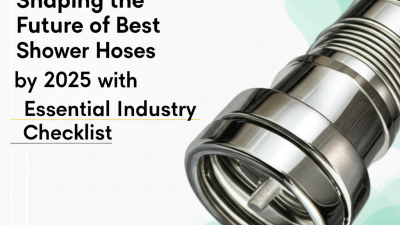
Innovative Technologies Shaping the Future of Best Shower Hoses by 2025 with Essential Industry Checklist
-
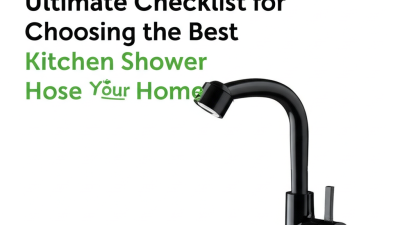
Ultimate Checklist for Choosing the Best Kitchen Shower Hose for Your Home
-
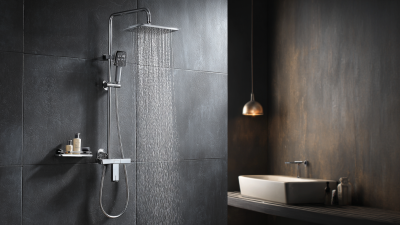
7 Smart Tips for Selecting the Best Wash Room Shower Set for Global Buyers
-
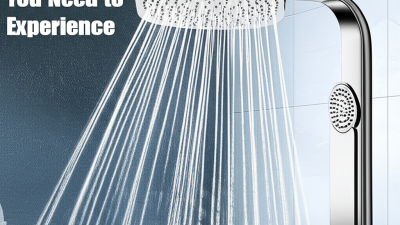
7 Incredible Features of the Best Luxury Shower Set You Need to Experience
-
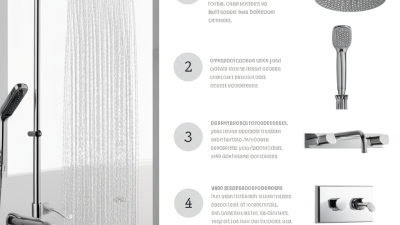
How to Choose the Perfect Shower Set System for Your Bathroom Upgrade
-
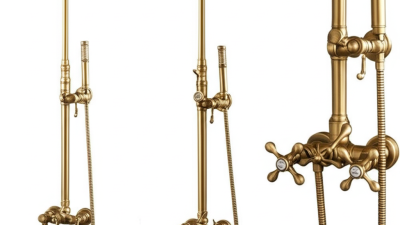
Exceptional Quality: China's Premier Antique Brass Shower Sets for Global Export



